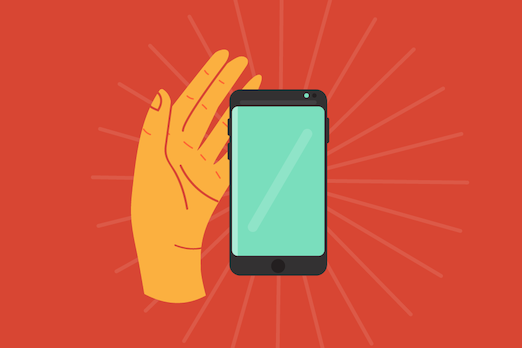How Connected Devices Are Reshaping Consumer Behavior [INFOGRAPHIC]

The consumer experience is simultaneously more complicated for providers yet more convenient for shoppers than it ever has been.
The Internet of Things (IoT)—a web of smart devices including light bulbs, TVs, security systems, vehicles, wearables, voice assistants, smartphones, and much more that can be connected to the internet and to one another—currently consists of 27 billion devices. That number is expected to grow nearly 200 percent to reach 75 billion by 2025.
You guessed it, that means pretty much everyone is connected pretty much all the time. The typical American household contains 5 connected devices and 77 percent of Americans go online on a daily basis. Trends indicate that everything from personal robots to in-ear computers (we don’t know what that means, but we want one) to “smart gardening” will come online in the connected future.
And the craze to connect everything has certainly made an impact on consumer behavior.
Today, the internet empowers consumers to shop on myriad channels, browse countless competitors, chat with other shoppers, and even connect with brands directly! The popularity of voice search and smart home devices continues to grow as consumers prioritize convenience and speed when it comes to researching, finding, and purchasing what we want.
In addition, because consumers online all the time, they’re starting to expect businesses to be, as well. Eighty percent of consumers desire a response within six hours of sending a message to a company via social media—bonus points if it’s consistent and personalized across channels.
With this influx of technical prowess also comes a more aware consumer. They know you want their data. And 75 percent of internet users are willing to give it to you as long as you offer value in return. However, that doesn’t mean they don’t care about data security. When it seems like every month brings a new data breach, it’s no surprise that 78 percent of consumers report that data privacy concerns may inhibit their use of connected devices in the future.
What’s a business to do to keep up with the evolving consumer? First, we recommend adopting cutting-edge content management software that empowers you to serve personalized, consistent content exactly when and where consumers want it. Second, we think it’s vital you get to know their changing habits and expectations—which is exactly what we hope to help you achieve with this infographic all about how connected devices are reshaping consumer behavior in 2019.

For additional connected device trends and insights, subscribe to our Headless CMS blog!
About Contentstack
The Contentstack team comprises highly skilled professionals specializing in product marketing, customer acquisition and retention, and digital marketing strategy. With extensive experience holding senior positions at renowned technology companies across Fortune 500, mid-size, and start-up sectors, our team offers impactful solutions based on diverse backgrounds and extensive industry knowledge.
Contentstack is on a mission to deliver the world’s best digital experiences through a fusion of cutting-edge content management, customer data, personalization, and AI technology. Iconic brands, such as AirFrance KLM, ASICS, Burberry, Mattel, Mitsubishi, and Walmart, depend on the platform to rise above the noise in today's crowded digital markets and gain their competitive edge.
In January 2025, Contentstack proudly secured its first-ever position as a Visionary in the 2025 Gartner® Magic Quadrant™ for Digital Experience Platforms (DXP). Further solidifying its prominent standing, Contentstack was recognized as a Leader in the Forrester Research, Inc. March 2025 report, “The Forrester Wave™: Content Management Systems (CMS), Q1 2025.” Contentstack was the only pure headless provider named as a Leader in the report, which evaluated 13 top CMS providers on 19 criteria for current offering and strategy.
Follow Contentstack on LinkedIn.





.svg?format=pjpg&auto=webp)
.svg?format=pjpg&auto=webp)
.png?format=pjpg&auto=webp)






.png?format=pjpg&auto=webp)


